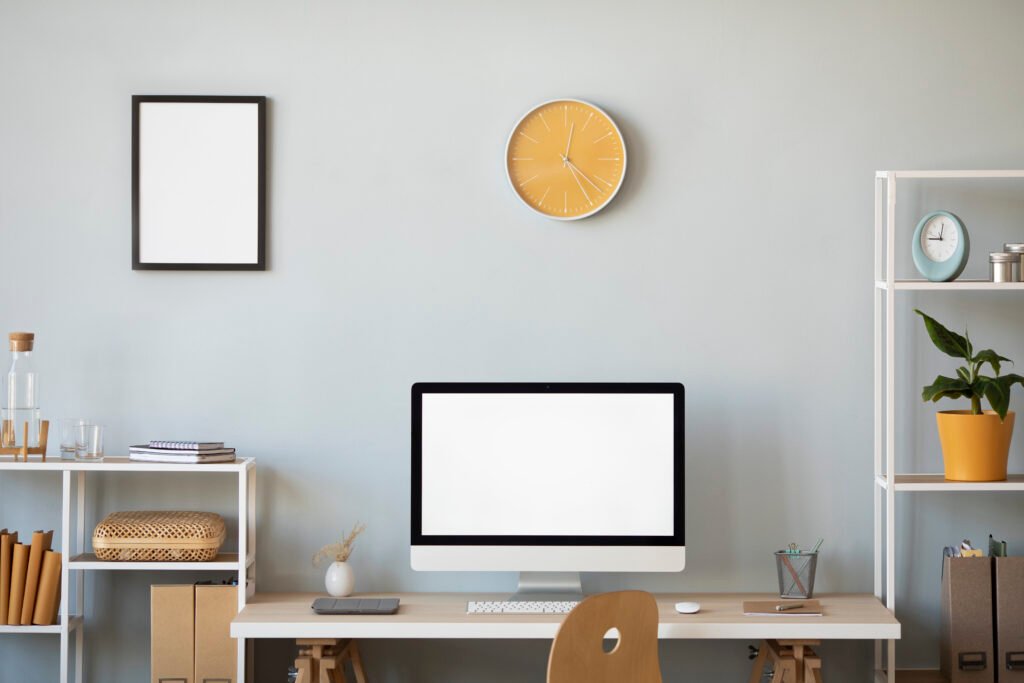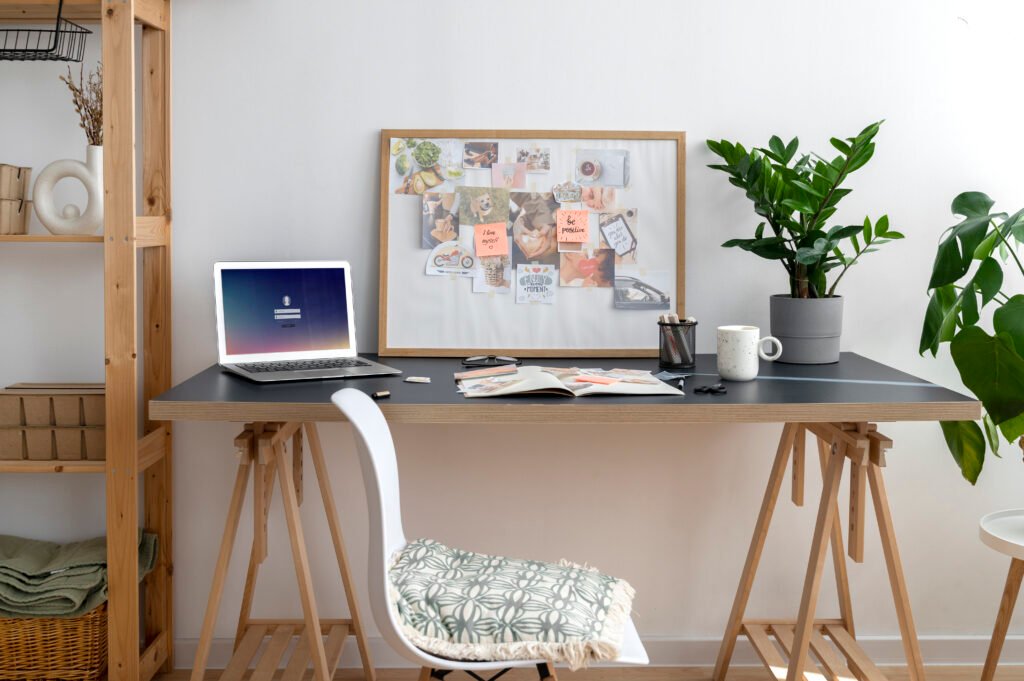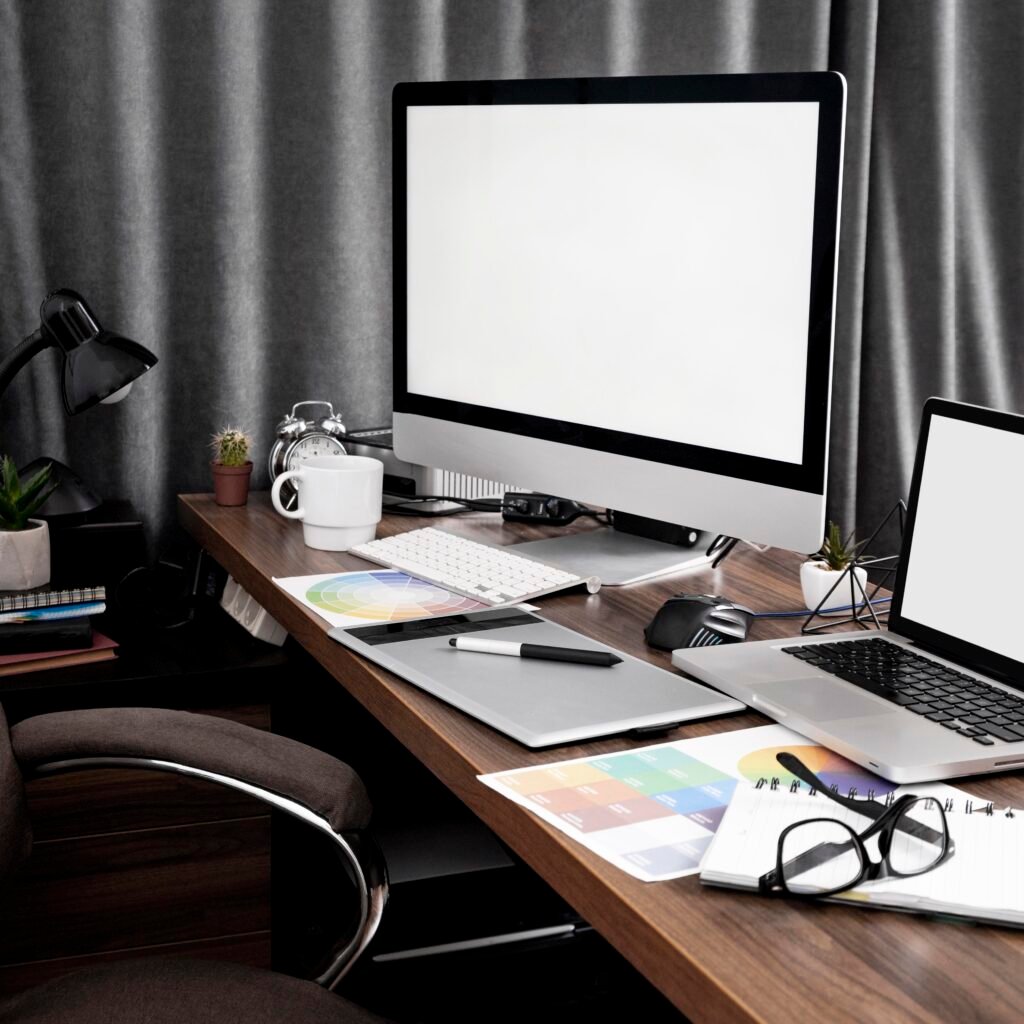Working from home has become the new normal for many of us, and the right home office setup can make all the difference between feeling productive and feeling stuck. Whether you’ve got a dedicated room or just a corner of your living room, designing a space that supports your focus, comfort, and motivation is one of the best investments you can make. Let’s explore what makes an effective home office setup and how to create one that suits both your workflow and your personal style.

1. Choose Your Space with Purpose

The first step in building your home office setup is choosing the right spot. If you’re lucky enough to have a spare room, that’s ideal—but even a quiet corner or a converted closet can work well. The goal is to create a sense of separation between your work and home life, helping your mind switch into “focus mode” when you sit down.
When picking a location, consider factors like natural light, noise levels, temperature, and proximity to distractions. You’ll be spending hours in this space every day, so it needs to feel right. If possible, position your desk near a window for fresh air and natural light—it can do wonders for your mood and energy levels throughout the day.
2. Ergonomics Matter
Once you’ve chosen the space, the next priority is comfort. A thoughtful home office setup should support your body and posture, especially if you spend long hours at your desk. An ergonomic chair with lumbar support, adjustable height, and a sturdy base can prevent back pain and fatigue. Pair it with a desk that’s at the proper height so your elbows form a 90-degree angle when typing.
Keep your monitor at eye level to avoid neck strain, and position your keyboard and mouse close enough so you don’t have to stretch your arms. Small ergonomic accessories—like a wrist rest or a footrest—can make a surprising difference over time. Your body will thank you for it.
3. Lighting and Atmosphere
Lighting is one of the most underestimated aspects of a home office setup. Poor lighting can cause headaches, fatigue, and a drop in motivation. Ideally, you want to work with as much natural light as possible during the day. Position your desk so sunlight illuminates the space without glaring directly onto your screen.
In the evenings or on cloudy days, a combination of ambient lighting (like a floor lamp) and task lighting (like a desk lamp) keeps the workspace bright but soft. Choose bulbs that produce warm, natural tones instead of harsh white light.
You can also improve the atmosphere with small touches—houseplants, soft textures, and even a diffuser with your favorite scent. A pleasant environment encourages focus and creativity.
4. Keep It Organized and Clutter-Free

Clutter is the silent enemy of productivity. A clean and organized home office setup makes it easier to concentrate and reduces stress. Invest in practical storage solutions such as drawers, shelves, filing cabinets, or cable organizers. Keep only essential items on your desk—like your computer, notepad, and maybe one decorative item.
If you work with papers, designate a tray or folder system to keep documents in order. For digital clutter, organize your desktop files and email folders regularly. The cleaner your workspace looks, the clearer your mind will feel.
A good rule of thumb: at the end of each workday, take two minutes to tidy up your desk. When you return the next morning, you’ll start with a fresh mindset.
5. Technology That Works for You
Your home office setup should be powered by reliable, efficient technology. A stable internet connection is essential—nothing disrupts a workday faster than a dropped video call or slow downloads. If your Wi-Fi signal is weak, consider a mesh router or a wired Ethernet connection.
Invest in a good monitor or even dual screens if your work involves multitasking. A wireless keyboard and mouse help keep your workspace neat, while a quality webcam and microphone improve your virtual meeting experience. Cable management clips or sleeves can help maintain a clean aesthetic.
Don’t forget about audio. Noise-canceling headphones can be a game-changer if you live with family members or roommates. The goal is to make your setup smooth, quiet, and supportive of deep work.
6. Style and Personal Touches

A home office setup should reflect your personality. When your workspace looks good, it feels good—and that motivation can lead to better focus and creativity. Choose a color scheme that boosts your energy and calmness: whites, greys, and natural woods create a minimalist feel, while pops of green, blue, or yellow can add inspiration.
Hang a few art pieces, motivational prints, or photos that make you smile. Add greenery with plants like pothos or succulents—they’re low-maintenance and instantly brighten up any room. Keep in mind that your decor should enhance the space, not distract you from work. Think balance: professional, but personal.
7. Adapt and Evolve Your Setup

One of the best things about a home office setup is that it can evolve as your needs change. Maybe you’ll decide to upgrade your chair, add a standing desk, or reposition your monitor for better lighting. Regularly assess what’s working and what isn’t.
If you find yourself feeling stiff, experiment with a sit-stand desk. If you’re short on space, consider wall-mounted shelves or foldable desks. Your setup should grow with your workflow, lifestyle, and comfort level. The more you fine-tune it, the more it feels like a natural extension of your workday.
8. Create a Routine Around Your Space
Your home office setup is only part of the productivity puzzle—how you use it matters just as much. Create a routine that signals the start and end of your workday. That could mean making a morning coffee before sitting down or closing your laptop and turning off your lamp at the end of the day.
Small rituals like these help your brain associate the space with work and relaxation at the right times. Over time, this builds consistency, structure, and a healthy balance between your professional and personal life.
Final Thoughts
The perfect home office setup blends comfort, efficiency, and personality. It’s not about having the fanciest equipment or the biggest space—it’s about creating an environment that helps you do your best work and feel good while doing it.
Choose a space that inspires focus, invest in ergonomic furniture, pay attention to lighting and organization, and don’t forget to add touches that make it feel like yours. As you refine and adapt your setup, you’ll find that productivity, creativity, and satisfaction all rise together.
Your home office isn’t just a workspace—it’s where ideas come to life.




Leave a Comment